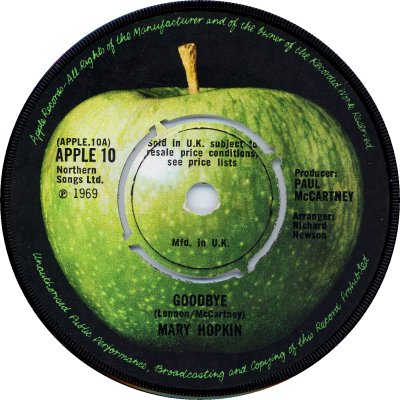
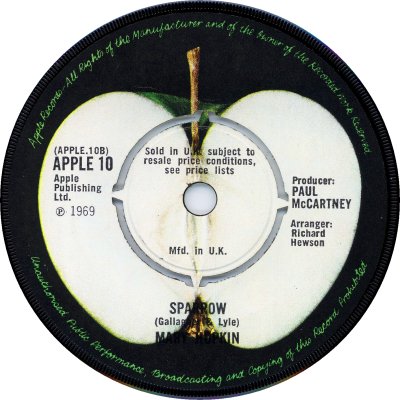
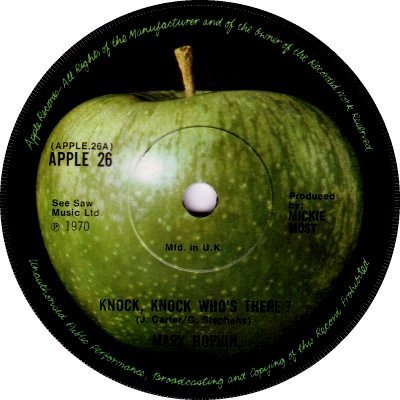
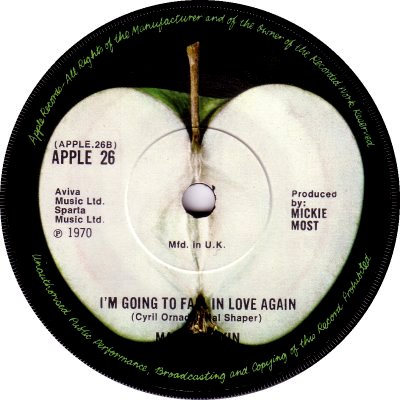
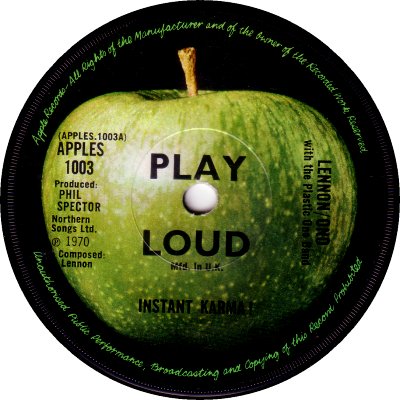
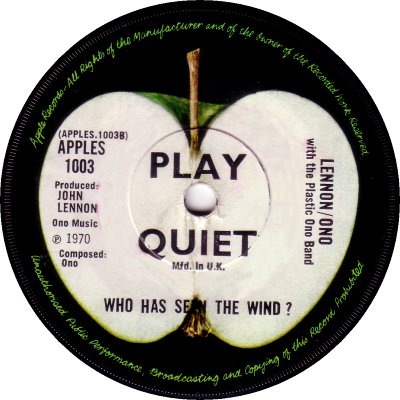
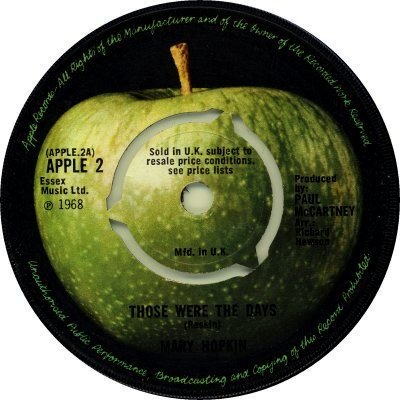
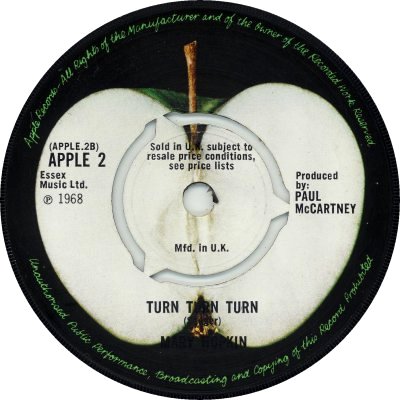
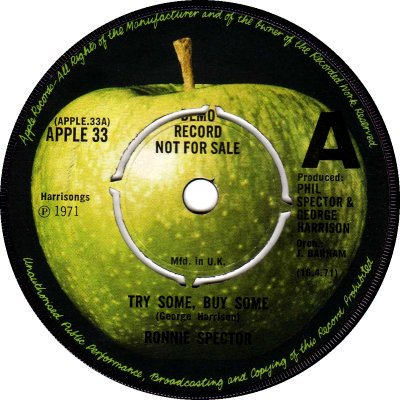
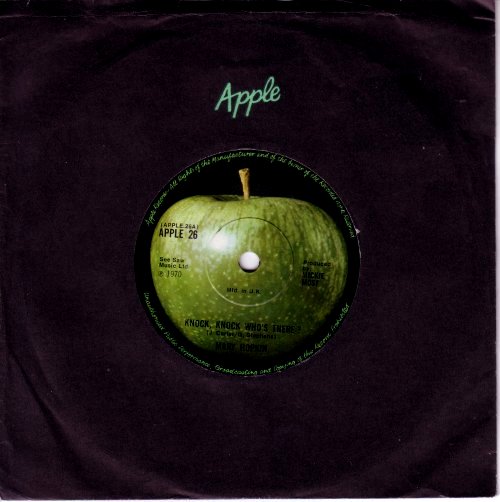
The Beatles' label. Apple received its first mention in 'Record Retailer' of the 3rd of January 1968, which said that the label was expected to make its debut in June or July. 'RR' of the 19th of June was able to provide some details: EMI was 'almost certain' to do the pressing and distribution but Apple was to be responsible for its own promotion. The company was involved in a 'heavy build up' of talent; The Beatles themselves were under contract with EMI until early 1976, but EMI might perhaps be willing to allow them to appear on another label provided that that label was issued by EMI and that there was no effect on the benefits to the company which were included in the contract. In the event records by The Beatles as a group and as individuals were issued on Apple, but they were almost always given catalogue numbers from the 'R-5000' series of their old label, Parlophone; three singles by the Plastic Ono Band / John Lennon / Yoko Ono in various combinations were exceptions, being numbered in the APPLES-1000s. Non-Beatles singles were numbered in an APPLE-0 series; crossed-out matrix numbers in the run-offs of the first three suggest that the series was originally intended to be APPLE-1000.
The first four Apple singles came out in August 1968. Mary Hopkin's 'Those Were The Days' b/w 'Turn Turn Turn' (APPLE-2) was an immediate success, reaching the No.1 spot and suggesting that there was more to Apple than just The Beatles; she went on to enjoy several more hits for the label. Badfinger added three Top Ten singles and records by Trash and Billy Preston tickled the charts, but after 1972 the company was to rely on The Beatles for its successes. 'RR' of the 22nd of January 1969 reported that Apple was discussing 'some sort of merger' with NEMS (q.v.) but nothing seems to have come of the talks. Following the break-up of The Beatles in 1970 Apple's parent company, Apple Corps, ran into financial difficulties, and 'Music Week' of the 3rd of May 1975 carried the news that 'to all intents and purposes' it would close down that weekend, though the label would continue to exist 'probably until The Beatles sign new individual contracts'. As it happened Apple Corps survived, in a greatly altered form. The Apple label ceased to release any new material after The Beatles' collective contract expired in the Spring of 1976, and from that point it appears to have been used only occasionally, as an outlet for reissued or rehashed material by the band.
The design of the Apple label remained the same throughout its existence, though there were variations for certain individual singles. Until around August 1969 the legend 'Sold in the U.K.' (etc) appeared above the spindle hole (1, 2), as it did on the other EMI labels. Unusually the A-sides (1, 3, 5, 7) and B-sides (2, 4, 6, 8) had different, though related, designs. Demos were marked with an overprinted 'A' and the appropriate text (9). Just out of interest, a 1979 EMI single by the Colorado Beetles appeared on a mock Apple label; see 'The Colorado Beetles' page for scans. EMI distributed Apple records; it was generally responsible for manufacturing them as well, but contract pressings of some of the more popular records can be found - the Mary Hopkin single with three perforations shown above (7, 8) was made by Phonodisc, presumably at a time when EMI's own pressings were fully occupied, and Pye, Decca and CBS all chipped in at various times. The discography below only covers the 1970s. Thanks to Eddie Hutchinson for discographical input.



Copyright 2006 Robert Lyons.

